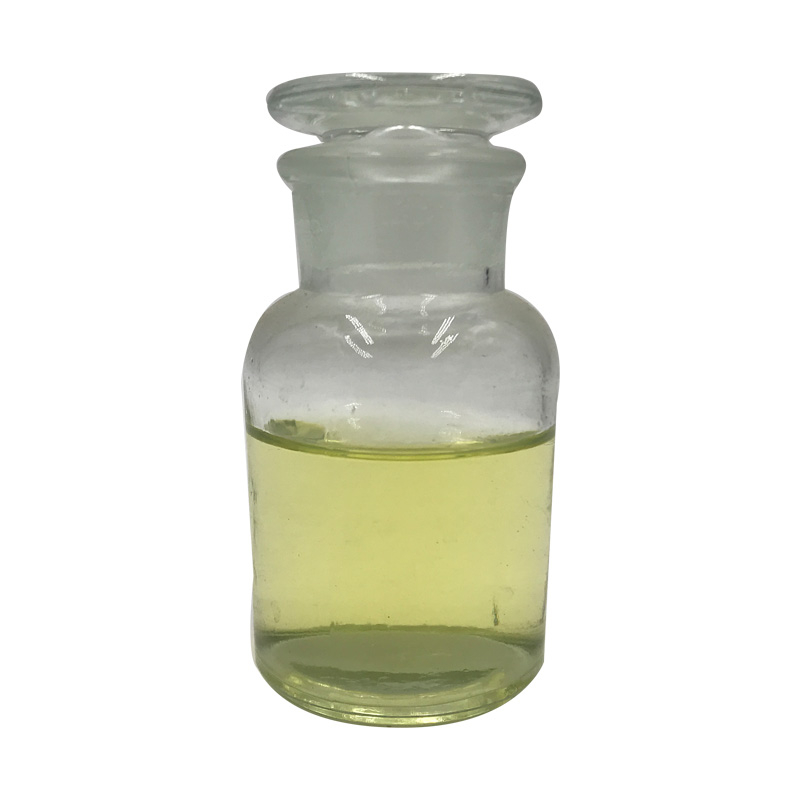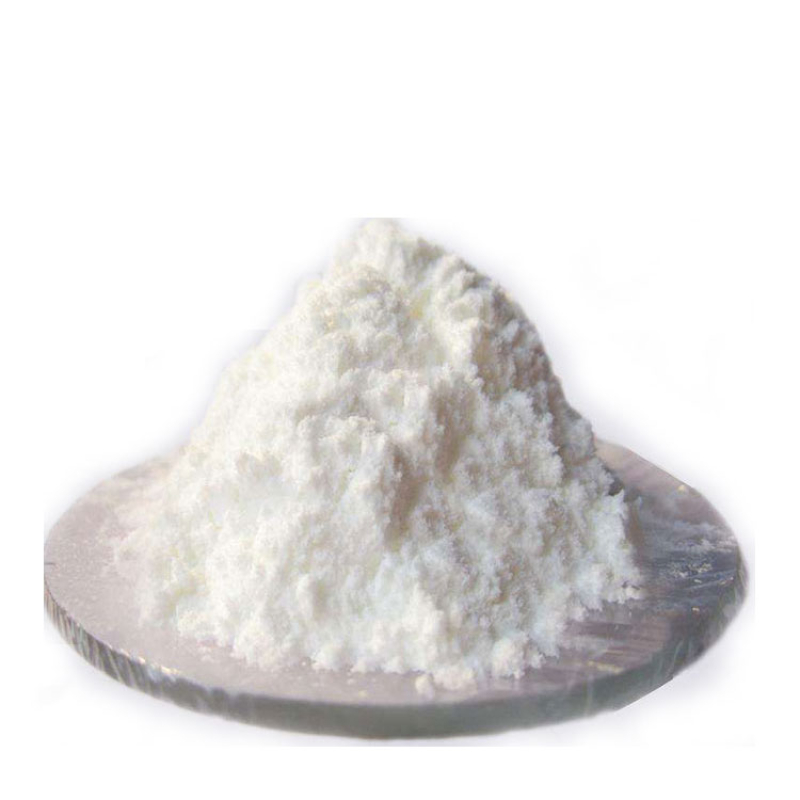Products Description of DL-Menthol CAS#89-78-1 Menthol is a chemical agent. It is extracted from the leaves and stems of mint. It is a white crystal with a molecular formula of C10H20O. It is the main component of mint and peppermint essential oils. In the world, China and Brazil are the main natural mint producers, and the annual output of mint oil reaches 2000-3000 tons. Menthol and racemic menthol can be used as flavoring agents for toothpaste, perfume, beverages and candies.
Contact Now
Products Description of 2-Dimethylaminoisopropyl chloride hydrochloride CAS#4584-49-0Hydrochloride salt of 2-Dimethylaminoisopropyl Chloride, used in the synthesis of analogues of lipophilic chalcones, which act as antitubercular agents.2-Dimethylaminoisopropyl chloride hydrochloride Chemical PropertiesMelting point 187-190 °C(lit.)storage temp. Store below +30°C.solubility 2000g/lform Crystalline Powdercolor White to light creamPH5-6 (500g/l, H2O, 20℃)Water Solubility 2000 g/L (20 º C)Sensitive HygroscopicBRN 3670215InChIInChI=1S/C5H12ClN.ClH/
Contact Now
Products Description of 2,2-Dimethylthiazolidine CAS#19351-18-92,2-Dimethylthiazolidine, an organic chemical substance, molecular formula: C5H11NS.2,2-Dimethylthiazolidine Chemical PropertiesBoiling point 61 °C / 15mmHgdensity 1,02 g/cm3vapor pressure 2.01hPa at 25℃refractive index 1.5100-1.5140Fp 55°Cstorage temp. 2-8°C(protect from light)pka8.97±0.40(Predicted)form clear liquidcolor Colorless to Light orange to YellowInChIInChI=1S/C5H11NS/c1-5(2)6-3-4-7-5/h6H,3-4H2,1-2H3InChIKeySNPQRYOQWLOTFA-UHFFFAOYSA-NSMILESS1CCNC1(C)CLogP1.38CAS DataBase Refer
Contact Now
Products Description of Salicylaldehyde CAS#90-02-8Salicylaldehyde is a light yellow oily clear liquid with a melting point of -7°C and a boiling point of 197°C. It has a burning and almond smell.
Contact Now
Products Description of 4-Amino-2-chloropyridineCAS#14432-12-3This product is white crystals, m.p.89~91℃, insoluble in water.4-Amino-2-chloropyridine Chemical PropertiesMelting point 90-94 °C(lit.)Boiling point 153°C 5mmdensity 1.2417 (rough estimate)refractive index 1.5110 (estimate)Fp 153°C/5mmstorage temp. Keep in dark place,Sealed in dry,Room Temperaturesolubility DMSO (Slightly), Methanol (Slightly)pka4.73±0.30(Predicted)form Crystalline Powdercolor Light yellowWater Solubility Slightly soluble in water.BRN 108671InChIKeyBLB
Contact Now
Products Description of 2-(4-FLUORO-PHENYL)-PIPERAZINE CAS#65709-33-32-(4-Fluorophenyl)-piperazine is a common pharmaceutical intermediate.2-(4-FLUORO-PHENYL)-PIPERAZINE CAS#65709-33-3 Chemical PropertiesMelting point 111-114°CBoiling point 287.2±35.0 °C(Predicted)density 1.079±0.06 g/cm3(Predicted)storage temp. 2-8°Csolubility DMF: 30 mg/ml; DMF:PBS(pH7.2) (1:2): 0.33 mg/ml; DMSO: 30 mg/ml; Ethanol: 30 mg/mlform A crystalline solidpka8.76±0.40(Predicted)Safety Information HS Code 2933599590Product Application of 2-(4-FLUORO-PHENYL)-PIPERA
Contact Now
Products Description of ForchlorfenuronCAS#68157-60-8Chloropyridin-4-yl [1-(2-chloropyridin-4-yl)-3-phenylurea, CPPU], also known as chlorpyrifos and KT-30, is a plant growth regulator of the cytokinin class. It has the effects of inducing callus growth and promoting bud development before harvest. After harvest, it has a significant effect on controlling post-harvest leaf yellowing and post-harvest diseases of various fruits and vegetables.
Contact Now
Products Description of (2S)-(+)-2,5-Dihydro-3,6-dimethoxy-2-isopropylpyrazine CAS#78342-42-4(S)-2,5-Dimethoxy-3-isopropyl-3,6-dihydropyrazine.Molecular formula: C9H16N2O2.Molecular weight: 184.24 g/mol(2S)-(+)-2,5-Dihydro-3,6-dimethoxy-2-isopropylpyrazine Chemical Propertiesalpha 102 º (c=1%, EtOH)Boiling point 245.2±33.0 °C(Predicted)density 1.028 g/mL at 20 °C (lit.)storage temp. Sealed in dry,2-8°Csolubility Chloroform (Slightly), DMSO (Slightly), Ethanol (Sparingly), Methanol (Slightly)pka3.81±0.60(Predicted)form Liquidcolor Clear colorless to pale
Contact Now
Products Description of 2-Hydroxy-3-trifluoromethylpyridineCAS#22245-83-62-Hydroxy-3-trifluoromethylpyridine, as a pyridine derivative, plays an important intermediate role in the chemical industry, medical and pesticide fields, etc.2-Hydroxy-3-trifluoromethylpyridine Chemical PropertiesMelting point 150-153°CBoiling point 223.7±40.0 °C(Predicted)density 1.398±0.06 g/cm3(Predicted)storage temp. Inert atmosphere,Room Temperatureform powder to crystalpka9.67±0.10(Predicted)color White to Almost whiteInChIInChI=1S/C6H4F3NO/c7-6(8,9)4-2-1-3-10-5(4)11/h1-3H,(H,10,
Contact Now
Products Description of L-Threonic acid magnesium salt CAS#778571-57-6Magnesium L-threonate (MgT, pronounced "Mag T") is a chemical substance discovered by Professor Liu Guosong and a team from Tsinghua University and MIT.L-Threonic acid magnesium salt Chemical Propertiesstorage temp. Inert atmosphere,Room TemperatureInChIInChI=1S/2C4H8O5.Mg/c2*5-1-2(6)3(7)4(8)9;/h2*2-3,5-7H,1H2,(H,8,9);/q;;+2/p-2InChIKeyYVJOHOWNFPQSPP-UHFFFAOYSA-LSMILESC(C1=O[Mg+2]2(O=C(C(O)C(O)CO)[O-]2)[O-]1)(O)C(O)COProduct Application of L-Threonic acid magnesium salt CAS#778571-57-6Magnesium, as a
Contact Now
Products Description of 1-Hydroxyethylidene-1,1-diphosphonic acid CAS#2809-21-4Hydroxyethylidene diphosphonic acid, also known as HEDP, is a diphosphate compound used in detergents, water purification processes, cosmetics and pharmaceutical production.
Contact Now
Products Description of Oleic CAS#112-80-1Insoluble in water, soluble in benzene, chloroform, miscible with methanol, ethanol, ether and carbon tetrachloride. Because it contains double bonds, it is easily oxidized by air, producing an unpleasant odor and turning yellow. When treated with nitrogen oxides, nitric acid, mercurous nitrate and sulfurous acid, it can be converted into oleic acid. When hydrogenated, it becomes stearic acid. The double bonds can easily react with halogens to form halogenated stearic acid.
Contact Now
Products Description of Oleic acid CAS#112-80-1Insoluble in water, soluble in benzene, chloroform, miscible with methanol, ethanol, ether and carbon tetrachloride. Because it contains double bonds, it is easily oxidized by air, producing an unpleasant odor and turning yellow. When treated with nitrogen oxides, nitric acid, mercurous nitrate and sulfurous acid, it can be converted into oleic acid. When hydrogenated, it becomes stearic acid. The double bonds can easily react with halogens to form halogenated stearic acid.
Contact Now
Product DetailsProducts Description of Octadecenoic Acid CAS#112-80-1Insoluble in water, soluble in benzene, chloroform, miscible with methanol, ethanol, ether and carbon tetrachloride. Because it contains double bonds, it is easily oxidized by air, producing an unpleasant odor and turning yellow. When treated with nitrogen oxides, nitric acid, mercurous nitrate and sulfurous acid, it can be converted into oleic acid. When hydrogenated, it becomes stearic acid. The double bonds can easily react with halogens to form halogenated stearic acid.
Contact Now
Products Description of 4,4'-Diaminodiphenylsulfone CAS#80-08-0Dapsone is a sulfone antibacterial drug with a strong antibacterial effect on Mycobacterium leprae. Its preparations have been widely used in the treatment of leprosy. As the first choice for the treatment of leprosy, dapsone acts on the dihydrofolate synthase (DHPs) of bacteria, interferes with the synthesis of folic acid, and affects the synthesis of protein by bacteria.
Contact Now
Products Description of Sodium Oleate CAS#143-19-1Sodium oleate, also known as sodium octadecenoate, cis-9-octadecenol, oleyl alcohol, cis-9-octadecenol, (Z)-octadecenol, olive oil alcohol, cis-9-octadecen-1-ol, 9-n-octadecenol, octadecenol. It is an organic oil with the chemical formula C17H33CO2Na. Sodium oleate is the main component of soap made from olive oil and tallow soap. It can also be made by reacting sodium hydroxide with oleic acid. It is a compound composed of a hydrophobic group and a hydrophilic group.
Contact Now
Products Description of Sodium Oleate CAS#143-19-1Sodium oleate, also known as sodium octadecenoate, cis-9-octadecenol, oleyl alcohol, cis-9-octadecenol, (Z)-octadecene-9-enol, olive oil alcohol, cis -9-Octadecen-1-ol, 9-n-octadecenol, octadecenol. It is an organic oil with the chemical formula C17H33CO2Na. Sodium acid acid is the main component of soaps made from olive oil and other soaps. It is also the main component of tallow soap. It can also be produced by the reaction of sodium hydroxide and oleic acid. It is a compound composed of hydrophobic and hydrophilic groups.
Contact Now
Bulk Calcium Chloride CAS#10043-52-4Product Description:At our company, we pride ourselves on offering high-quality Calcium Chloride with the chemical formula CaCl2. Our 99% Calcium Chloride is meticulously produced to meet the demands of various industries, ensuring optimal performance and efficiency.
Contact Now
Products Description of Mogroside V CAS#88901-36-4 Mogroside V is extracted from a plant called Momordica grosvenori. Momordica grosvenori is a vine plant of the Cucurbitaceae family (Mogrosvenori genus). The mature fruit of Momordica grosvenori is extremely sweet and is rich in cucurbitane-type tetracyclic triterpenoid saponins, among which Mogroside V is the main sweet component, with a dry weight content of up to 1.6%.
Contact Now
Products Description of TRIDECETH-4 CAS#69011-36-5Condensation products of isomeric alcohol and ethylene oxideTRIDECETH-4 Chemical PropertiesBoiling point 290℃[at 101 325 Pa]density 0.907[at 20℃]vapor pressure 0.007Pa at 20℃Water Solubility 56mg/L at 20℃LogP4.73 at 25℃EPA Substance Registry SystemPolyethylene glycol mono(branched tridecyl) ether (69011-36-5) Safety InformationRIDADR 3082HazardClass 9PackingGroup IIIProduct Application of TRIDECETH-4 CAS#69011-36-5Isomeric alcohol ether E-1300 products are easily dispersed or soluble in water, a
Contact Now
Products Description of Kojic acid CAS#501-30-4Kojic acid, also known as kojic acid and kojic acid, is an organic acid with antibacterial effect produced by aerobic fermentation of glucose by Aspergillus candida at 30-32°C. Its molecular structure is a γ-pyrone with a substituent. Among the γ-pyrone compounds existing in nature, the only famous compounds are kojic acid and maltol. In 1907, Saito separated kojic acid crystals from rice koji. It was named by Yabuta in 1912 and its structure was determined in 1924.
Contact Now
Products Description of Polyisobutylene CAS#9003-27-4Polyisobutylene (PIB) is a non-toxic, water-white viscous liquid that exhibits excellent low-temperature flexibility due to its low glass transition temperature. It is a linear saturated polymer with a highly flexible molecular chain, which contributes to its superior elasticity and extensibility. PIB is recognized for its high chemical stability and can be tailored to various applications by adjusting its molecular weight, ranging from low to high molecular weights with viscosities varying from 5 to 4,700 cSt @ 100°C.
Contact Now
Products Description of 4-Methylmorpholine CAS#109-02-4N-methylmorpholine is an important organic chemical intermediate. It is an excellent solvent, emulsifier, corrosion inhibitor, polyurethane foam catalyst, and can also be used as a pesticide intermediate.
Contact Now
Products Description of Polyvinylpyrrolidone CAS#9003-39-8Polyvinylpyrrolidone, abbreviated as PVP, is a polymer of vinylpyrrolidone. Due to its different degree of polymerization, it is divided into soluble PVP and insoluble PVPP (polyvinylpolypyrrolidone). The relative molecular mass of soluble PVP is 8000-10000. It can be used as a precipitant and precipitate with polyphenols. With this method, it is easy for residual PVP to remain in the wine.
Contact Now

































